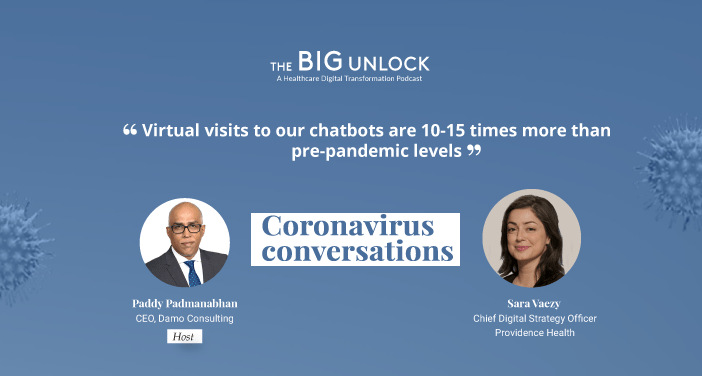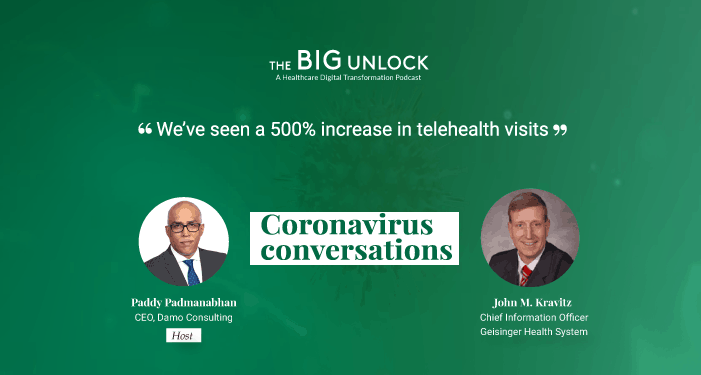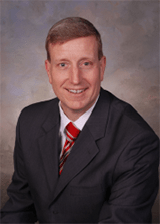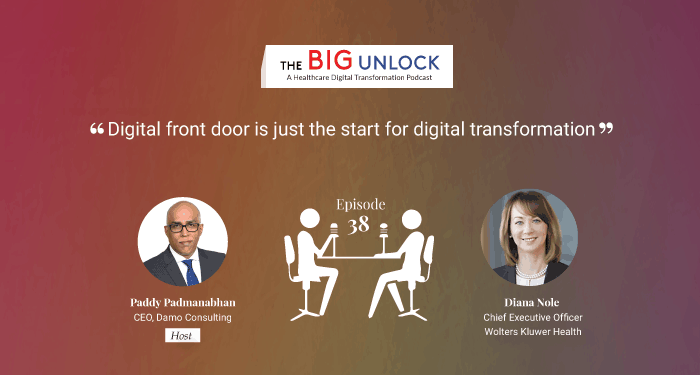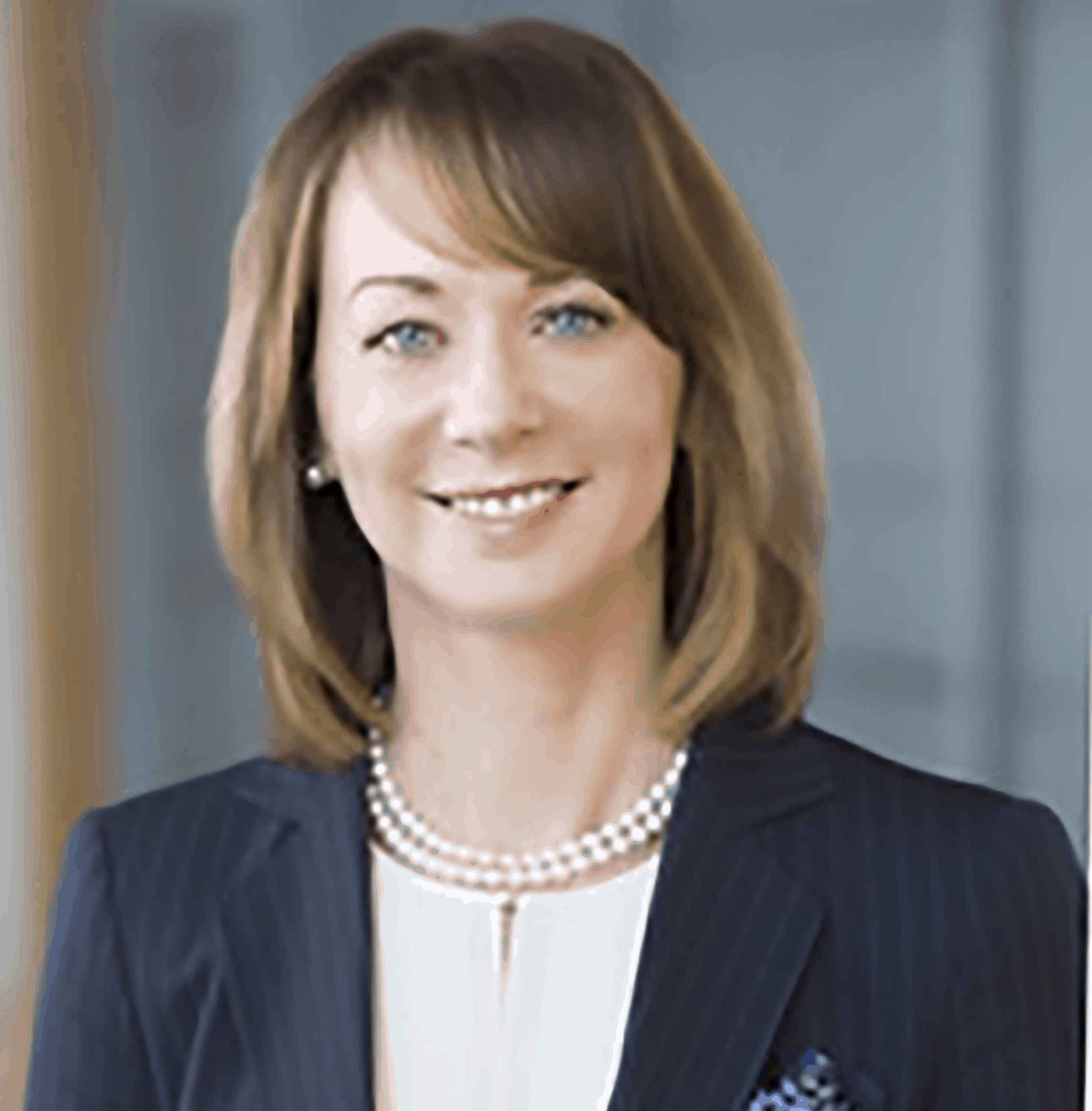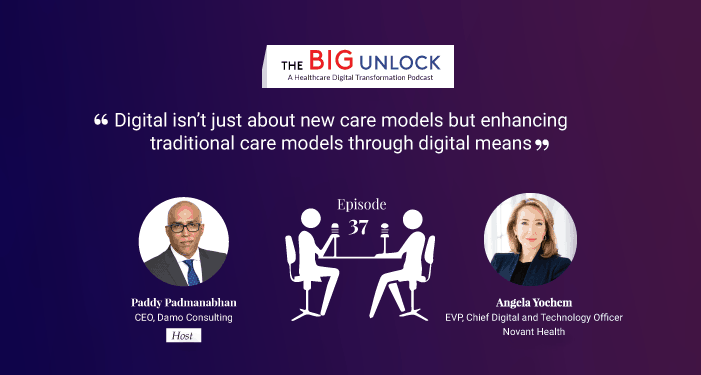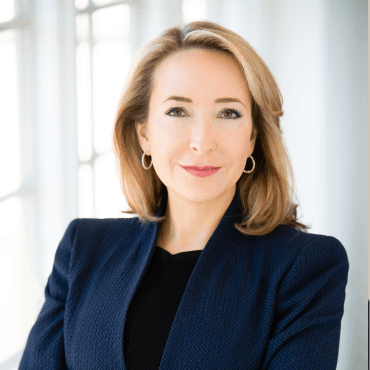Coronavirus conversations
Coronavirus conversations
Sara Vaezy, Chief Digital Strategy Officer Providence Health
"Virtual visits to our chatbots are 10-15 times more than pre-pandemic levels"
 Hosted by Paddy Padmanabhan
Hosted by Paddy Padmanabhan 
Share
In this episode, Sara Vaezy, Chief Digital Strategy Officer of Providence Health, the first health system to confirm a Covid-19 infection in the U.S., discusses how the organization has come together in a coordinated way in response to the crisis. Providence was one of the first health systems to enable patients with a set of FAQs and assessment tools by reconfiguring their chatbot Grace, which was developed over two years ago. In addition, the digital innovation group has helped Providence Health significantly scale up virtual visit capacity by redeploying and training clinicians in their same-day care operations to provide telehealth consults.
Providence Health has also successfully launched creative efforts to crowdsource PPE such as the 100 million mask challenge to ensure adequate availability of PPEs to protect the caregivers at the frontlines. Take a listen.
Sara Vaezy, Chief Digital Strategy Officer, Providence Health in conversation with Paddy Padmanabhan, CEO of Damo Consulting on the Big Unlock Podcast – “Virtual visits to our chatbots are 10-15 times more than pre-pandemic levels”
PP: We are continuing with our series of conversations related to how technology is helping respond to the Coronavirus crisis. This week we have with us Sara Vaezy, Chief Digital Strategy Officer of Providence Health. So, Sara;Seattle has been ground zero for the Coronavirus epidemic in America. What’s life been like for the last few weeks?
SV: We have been at the unfortunate leading edge of the pandemic for quite a while now. Providence Regional Medical Center in Everett, which is just outside of Seattle, had received the first coronavirus patient in the United States. We have been dealing with this for about a month now. We are coming together across every department, every function of the organization, under the leadership of Dr. Amy Compton Phillips, who is our Chief Clinical Officer. And in multiple times per day, emergency operations, command, huddles on various issues to tackle this. So, it’s been a busy month of doing whatever we can to help our patients, our caregivers, our broader communities, which include other community partners as well as other health systems. It’s been an extraordinarily busy time where a lot of the best has come out in folks in terms of the service that we provide.
PP: I have been following some of the extraordinary steps that you’ve taken at Providence Health to respond to this crisis and some extraordinary humanitarian stories, as well as.The stories related to how a large health system can come together to respond in a very coordinated way. What has been the single biggest challenge in your view in responding to the pandemic, how has Providence Health addressed it so far?
SV:I think one thing that holds for everything is that things are changing. They’re so fluid and we’re learning a lot along the way. It’s a quickly evolving situation and it’s different for every city, county, and state. Each has diverse needs and manifestations of the situation. So, just dealing with that has been an interesting challenge. There’s also just basic stuff like we’re all bracing ourselves for the volumes that we’re afraid will result from this pandemic. There is quite a bit of sort of consternation out there about this. It’s sort of two sides of the same coin. Our biggest concern is supporting our frontline caregivers while they deliver high-quality care to patients in a very difficult situation. If I were to summarize it into one sentence, that would be it.
PP: With a constantly evolving situation and all indications seem to be that we haven’t crested yet as far as the pandemic itself is concerned, as far as the United States is concerned. Everybody’s talking about the shortage of testing kits, PPE for frontline healthcare workers. And as you pointed out, that is a top priority for a health system to keep your healthcare workers, especially on the frontlines, safe so that they can deliver care and take care of themselves as well. You’ve taken some very creative approaches to address some of the shortages in the near term. Can you talk about a couple of those just to help our listeners understand how you respond on the fly to these kinds of situations?
SV: Absolutely. Thecredit goes to again our clinical teams who have been amazing. Our Chief Quality Officer, Jen Bayersdorfer, had an amazing idea for the hundred million mask challenge. In response to the shortage of PPE, she pulled together this effort and engaged the public around making PPE and masks to protect our caregivers. They found a template and high-quality supplies. Then our digital team supported them by putting it on a website and asking for volunteers in getting engagement. We were so overwhelmed with the enthusiasm and outpouring of support from volunteers. We didn’t even need as many volunteers as we got. Part of that was due to some local companies coming out and working with us and saying, we’ll make masks for you, we were a furniture company before this, but we think it’s important and we’ll make surgical masks for you by using this template and these materials. So that was incredible and was very creative in terms of making the most out of available resources. Volunteers providing their time and organizations just stepping up and supporting us. That was by far one of the more uplifting experiences that we’ve had throughout this whole thing.
PP: It’s an amazing story and I’m sure we’re going to see many more like that emerge in the coming weeks. There’s a lot of creative repurposing of our existing assets and resources across the country to deal with this. Hotels have been converted into hospitals. United Center, one of our biggest arenas, has been converted into a logistics hub for dealing with all the supplies and the logistics required to support this. You started a go funding program to help impacted residents. Tell us a little bit about that.
SV: This was a volunteer-run effort between many of us and the digital innovation team as well as population health, where we really wanted to focus on homeless, shelters and services, and homeless individuals who received services from those organizations.With a situation like this, those places had significant challenges with getting disinfectants, enough funding for buying food, and other supplies for the folks. Thanks to the broader community and all those who participated.From around 80 donors, we received over $22,000 that we distributed to 56 shelters across three states. And those shelters provide services to almost 500000 people. And we were able to do that in just a matter of three days from start to finish. It was in the interest of supporting our most vulnerable populations. And it was the brainchild of Dr. Rhonda Medow’s, who is our Chief Population Health Officer at Providence.
PP: I want to switch tracks a little bit and talk about the technology side of it. How your virtual care models have kicked in, in response to this crisis, especially telehealth, and anything else that you may have either built or repurposed from what you already have in responding to this crisis? What kind of adoption rates in terms of numbers you see and how is it the technology itself held up?
SV: I’ll focus primarily on what the digital innovation group has done. Before that, I want to mention that our IS colleagues have done a tremendous amount of work on a whole host of other technology-related things like standing up drive-through clinics, making iPads available to patients in the hospitals who are isolated, working closely with our physician enterprise to get thousands of providers who were providing care for established patients like chronic disease management care and things like that, getting them onboarded and ramped up on virtual visits. Our digital innovation group are absolutely at the forefront of everything happening from a technology standpoint and their efforts are running in parallel to everything else thatthe organization is doing.Froma patient-facing standpoint, we have stood up an assessment and FAQ chatbot, we call her Grace, and she does quick assessment by asking simple questions and triages patients to the appropriate next level of care, whether that just stay at home and rest or conducting a virtual visit with the provider. The second thing is really scaling up our virtual capacity for those same day use cases with folks who have concerns about Covid, whether they’ve been exposed, or they may have other risk factors. And that virtual visit capability has just seen tremendous ramping up over the course of the last few weeks. The third area is patient home monitoring. And for sub-acute patients who are either PUI patients under investigation or have tested positive but are not exhibiting the symptoms that would require them to be an inpatient in the hospital. We have sent them home and are monitoring their conditions remotely. And then we’ve done a lot of work around just a hub for consumer education and things like live locations for testing. So those are the primary activities that we’ve engaged in from a digital team standpoint. Grace is our chatbot, we call her Grace because we are a Catholic healthcare system. But Grace is a chatbot that we had made investments in for a couple of years. We could leverage those investmentsfortunately for Covid-19 specific use cases which means for patients essentially, we stood up a pathway that was with specific questions and workflow tied to Covid-19. So, things like have you traveled to a specific place that may have made you at higher risk for contracting the virus? And a whole host of other questions. We created the country’s first virtual assessment tool for quickly and safely assessing patients for Covid19. In the first few weeks, we helped over 70000 patients and had over a million messages exchanged between patients and the bot. It’s been a tremendous way to touch a lot of folks. In particular, keepthe worried one well, give them some peace of mind, and keep them in their homes, which we all know is very important, and then get folks who may need more sophisticated care. Care by talking with a provider live, get them triaged into virtual visits.
PP: I’ve talked to other health systems as well. And a self-triaging bot serves two purposes. One is, it prevents an overwhelming of thehealthcare system when people start calling in such large numbers. And secondly, it triages into the right and the appropriate care. And I imagine that you have to put the clinical community through a new set of training or orientation to responding to what’s coming in through the triaging tool, and then appropriately responding to them. Have you had to invest quickly, have a lot of training, are our providers comfortable with this mode of operation? Overnight you went from seeing patients to not seeing them anymore. What has been the challenge?
SV:When folks get triaged into virtual visits, they get triaged into what we call express care virtually. Express care is a clinical service that we have, and which is part of our ambulatory care network. We have over 50 providers who are just servicing express care. These folks are very specifically focused on express care. And in this case, they’ve been trained on those same-day use cases, particularly, virtual. We have been working with them really closely. Through our product team, they provide training like how to pull up the dashboards on your computer and just making that experience frictionless, not just for the patient who is accessing the virtual visit, but also for the provider who is delivering that care. So, they have stood up an entire customer success essentially team to be able to get our providers onboarded and trained for those same day’s virtual visits through Express Care Virtual.
PP: I want to share an anecdote with you, my daughter who lives in the city. She came down with a cold and a mild fever. The first thing that we told her to do was to schedule a virtual appointment. It took her a day to actually get to speak with a doctor even through a telehealth visit. So I imagine that even with a virtual model in place, even with the triaging in place, and the tools in place, there is still a feeling of maybe getting overwhelmed just because of the sheer volume of cases, all your routine cases which would have come in anyway. But then you layer on Covid-19 cases on top of that. How has the system responded in terms of Express care? Is it still same daycare, even though you switch to virtual or have the goalposts shifted a little bit?
SV: There are significant challenges that the ambulatory care and the express care team rose to those challenges to findlarge number of providers to staff those visits. On the technology side of things, the volume that is coming through the platforms is 10–15 times greater than what we had seen prior to the pandemic. We saw more volume in three weeks than we had in the entire previous year. And that has been a very interesting challenge in terms of the model. So previously it was on-demand telehealth and now what we’re seeing is almost like on-demand virtual visit. And lately, now what we’re seeing is like virtual urgent care or like a queuing model. And patients do wait in a waiting room in order to be able to access those visits. Now that it’s not a one day wait time, but they do sit in a waiting room in order to be able to access it. So, it’s almost a new model of care as compared to what we had previously.
PP: I’m hoping that, it’ll flatten out once we climb out of this crisis. And then hopefully when we go back to some level of normalcy, if you will, whatever, however, we may define normalcy going forward.
SV:An interesting point, though there is a lot to be said for the adoption of technology potentially being accelerated through this process, given patients’ behavior is potentially different because they’ve now experienced a new form of care, a new modality of care that they otherwise wouldn’t have. And it’s unlikely that it will go back to completely the way it was and revert to the pre-pandemic days. This is alsobeen facilitated by a lot of regulatory and payment changes. And it’s also unlikely that it will willfully revert again just because we’re all getting used to engaging in a different way. And so the hope is actually that things like telehealth will be more ubiquitous in the future.We have this opportunity to meet patients and customers where they are with some of the enablers in place, too, like payment and like the regulatory environment has changed.
PP: One of my previous guests said that with every crisis, a new opportunity arises. Maybe telehealth and virtual care models are what is going to be going forward. Switching to one more topic here, the dramatic jump in work from home employees. So, like every other business, every other enterprise across the land, you have seen remote workforce, double or triple. I know this is probably more or less function kind of responding to sit them all up remotely. What have been the challenges? Have there been more technological or cultural?
SV:From a technological standpoint, Providence has a strategic alliance with Microsoft that is led by ourIS team. Our utilization of Microsoft Teams has just been through the roof. It has saved us in so many different ways. We’ve used it as a collaboration platform across the entire organization and it’s been tremendous. I’m sure that all of these collaboration platforms have been strained to the full extent that they possibly could be. But it has really served us well to have been up on Teams and be able to utilize all of its functionality from its video conferencing, but also to like collaboration spaces and SharePoint integration and things like that. So that’s been reallyhelpful for us. We also use things that are cultural in nature, like virtual social hours and happy hours and with the teams just to reconnect. And we’ve put some best practices in place, like actually having video when we are talking with each other and meetings so that we can ensure that folks are engaged and that we get to see each other’s faces. It’s not a requirement, but it is definitely something that we try to encourage. So, we maintain that closeness while we’re social distancing.
PP: I know the Providence Innovation Group has a significant portfolio of investments in digital health startups that have developed a range of innovative solutions. How this crisis has impacted them one way or another. And what are some of the things you’re seeing and how are they responding to it? Can you talk about a couple of your portfolio companies as illustrative examples?
SV: Absolutely. I think across the board they’ve all risen to the challenge with various creative solutions for how they can help and that’s been really heartening.I’ll talk about a couple of our portfolio companies, Xealth, which is a digital prescription platform and an integration mechanism into the EMR and Twistle, which is a digital pathway company that we’ve partnered with both of them, both in an investment capacity from a portfolio company standpoint. Providence was the home for Xealth when it was incubated. And we’ve worked with them for over two years prior to making an investment. They are working together to provide that core platform for the home monitoring that we just talked about. So,Twistle is the pathway that patients use to input their data. And that alerts our providers when a patient needs additional care and Xealth has been the mechanism by which Twistle has integrated into Epic for us. So, they’ve been tremendous partners and Xealth has also done some other separate innovative things. For instance, Kroger grocery delivery and making that available for patients directly. They are all doing really interesting and kind of creative things and have done them very quickly. I thinkthis crisis has focused on all of us. And just the sense of urgency has made things go 10 times faster than they ever did in the past. For all of us.
PP: That is the sense I’m getting from digital health leaders, from other health systems as well as some of these programs and put them on a sense of urgency that may not have existed prior. And the part of the technology to dramatically change the way you deliver care and also do it in an efficient, cost-effective way is becoming more and more evident. As you’re aware, my second book was about to come out about digital transformation that I was co-authoring with Ed Marks, the former CEO of Cleveland Clinic. We have put it on hold for now. We are going to write a new chapter on how the digital health landscape is transformed as a consequence of this crisis. And I hope to come back to you and maybe request introductions to some of these portfolio companies of yours to really understand how they changed their product roadmap or turn on a dime, if you will, to respond to this crisis. Thank you for sharing those examples. Anything else you’d like to share with us Sara before we close the podcast.
SV: Thank you for having me and thank you for continuing to spread the word. We just want all of us to rally together, to marshal our resources, and manage the situation as much as possible. So, folks should feel free to reach out and learn more about how they can leverage what we’ve already done.
PP: Thank you, that is indeed part of the purpose of these series of what I’m calling the Coronavirus conversations. I want to be able to spread the word of how health systems across the land are responding to the crisis. And our hope is that someone, somewhere is picking up something useful from these conversations.
We hope you enjoyed this podcast. Subscribe to our podcast series at www.thebigunlock.com and write to us at [email protected]
Disclaimer: This Q&A has been derived from the podcast transcript and has been edited for readability and clarity.
About our guest

Sara leads the development of the digital strategy and roadmap, digital partnerships with health systems and technology companies, new business commercialization and business development, technology evaluation and pilots, and digital thought leadership at PSJH.
Prior to PSJH, she worked for The Chartis Group, a healthcare management consulting firm, where she focused on enterprise strategic planning, payer-provider partnerships, and the development of population health companies.
Recent Episodes
About the host
Paddy is the co-author of Healthcare Digital Transformation – How Consumerism, Technology and Pandemic are Accelerating the Future (Taylor & Francis, Aug 2020), along with Edward W. Marx. Paddy is also the author of the best-selling book The Big Unlock – Harnessing Data and Growing Digital Health Businesses in a Value-based Care Era (Archway Publishing, 2017). He is the host of the highly subscribed The Big Unlock podcast on digital transformation in healthcare featuring C-level executives from the healthcare and technology sectors. He is widely published and has a by-lined column in CIO Magazine and other respected industry publications.
Connect

